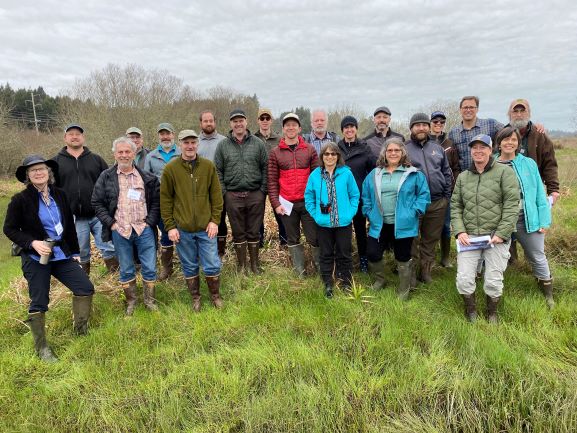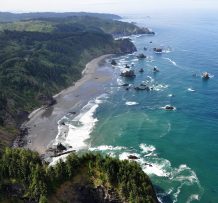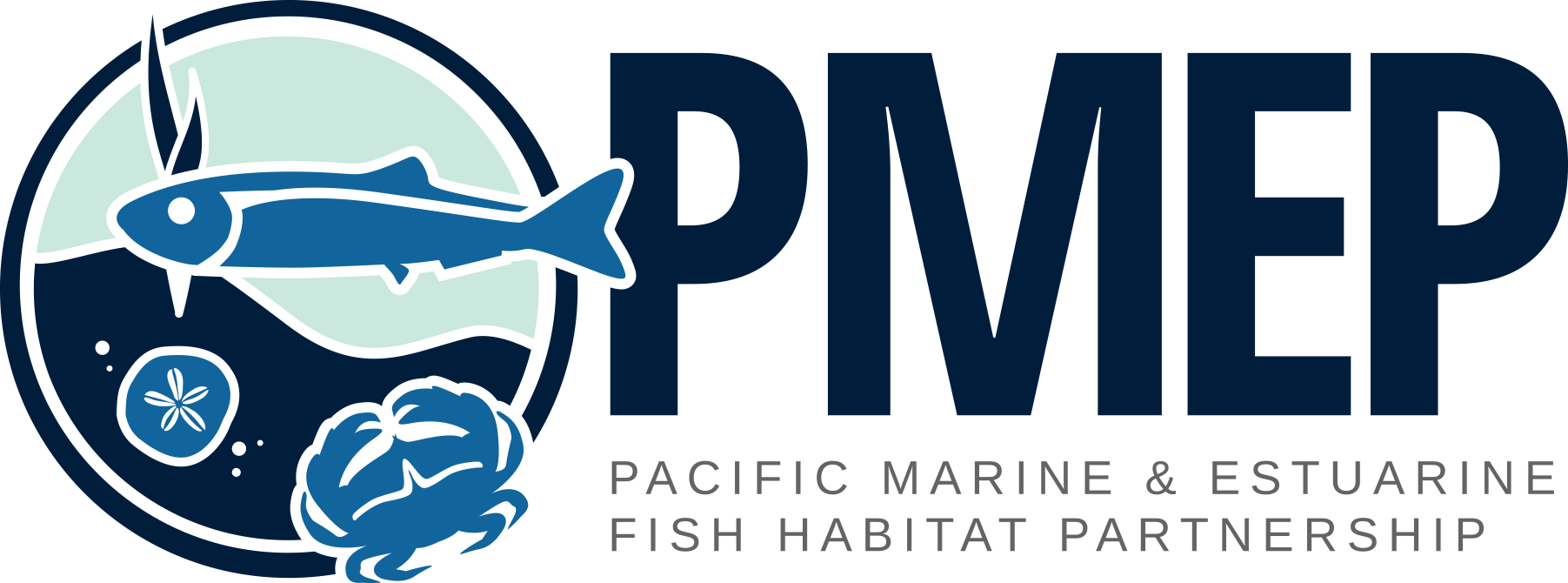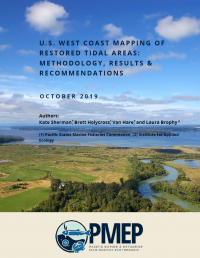The Pacific Marine and Estuarine Fish Habitat Partnership (PMEP) is pleased to release its Restored Tidal Estuaries Report. The report documents the methods and results of a mapping project undertaken to update its tidal wetland loss assessment to include areas where tidal connectivity and inundation have been restored. PMEP mapped 127 tidal re-connection projects across the West Coast, identifying 8,085 hectares (19,978 acres) of restored tidal wetland habitat. The project focused on mapping restored areas that were shown as “lost” within the 55 estuaries included in PMEP’s original tidal wetland loss assessment. This mapping effort resulted in 2.3% of tidal wetlands that were previously classified as “lost” being reclassified as “restored,” while 82.7% of tidal wetlands remained classified as “lost.” These results illustrate both the successes of restoring tidal connectivity and the potential for future efforts to re-connect important fish habitat across the West Coast. You can download the full report here. You can view the updated data layers showing restored tidal estuaries here.

- February 4, 2020
- Joan Drinkwin
- Uncategorized
- 0 comments
PMEP partners met in Arcata, California in late January to develop their annual workplan, refine PMEP’s strategic plan, learn about local restoration projects and affirm their’ shared vision for healthy estuarine and marine nearshore fish habitat along the West Coast. We also gave John Bragg, of South Slough National Research Reserve, a special sendoff, thanking him for his years of service to PMEP. Thanks again, John! Enjoy your retirement!

- January 7, 2020
- Joan Drinkwin
- Data and Assessments
- 0 comments
PMEP is expanding its spatial data framework to include nearshore areas and developing a ‘State of the Knowledge’ report on West Coast nearshore habitats.
PMEP is seeking spatially interpreted data (in either vector or raster format) identifying nearshore fish and invertebrate habitats (substrate, biotic, and water column component). We are placing a priority on datasets with a large spatial footprint that consistently map a habitat feature or features for large segments of the coast (preferably 10’s to 100’s of kilometers). For this project, PMEP is identifying the core nearshore as the upper end of the splash zone to -30m depth. In addition, PMEP is requesting data that extends beyond -30m to -100 (Seaward Zone) since many nearshore fish and invertebrates use habitats deeper than -30m. We are not currently looking for data from estuaries, however, we are looking for data for the nearshore of Puget Sound while recognizing that the Sound itself is classified as an estuary. For a full description of this request and a list of datasets already in hand, see PMEP_NearshoreDataCall.
If you would like to contribute to this effort, contact PMEP Data Steward, Kate Sherman, at info@pacificfishhabitat.org or 503-595-3100 by January 31, 2020.

